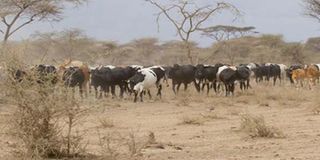Land-use planning ‘averts conflicts’

While Longido District has largely been peaceful, residents of neighbouring Ngorongoro have for two decades now been at loggerheads with the government over ownership and use of 1,500 square kilometres of Maasai ancestral land
What you need to know:
Residents of Loliondo in Ngorongoro District have for two decades now been at logger heads with the government over ownership and use of 1,500 square kilometres of Maasai ancestral land. The dispute refuses to go away and has recently been the subject of intense international scrutiny (see separate story Page 3).
Longido. Land-use planning has been cited as the reason Longido District does not experience frequent land conflicts as in neighbouring Ngorongoro District.
Residents of Loliondo in Ngorongoro District have for two decades now been at logger heads with the government over ownership and use of 1,500 square kilometres of Maasai ancestral land. The dispute refuses to go away and has recently been the subject of intense international scrutiny (see separate story Page 3).
In Longido, it has taken the African Wildlife Foundation (AWF) Kilimanjaro Landscape only about a decade to reconcile villages, parks, and reserves, according to the AWF Community Development officer Kimay Lendukay. He spoke at Tingatinga Ward in the district at the weekend.
Mr Lendukay said the foundation had been training local communities to work together to conserve wildlife and migration routes while protecting and advancing their own economic interests.
As a result, members of the communities mostly dominated by Maasai had embarked on long-term campaigns aimed at blending an entrepreneurship attitude into their pastoralist lifestyle.
“We used to keep large herds of cattle for pride regardless of their commercial value,” Ms Mary Laitayok, the vice chairperson of a cooperative union involving Tingatinga, Ngereani, and Sinya villages, said.
A traditional leader, popularly known as Laigwanan in Kimaasai, Mr Kipululu Napiiteng, who is also a member of the union, said AWF seminars enabled them to do away with some outdated customs.
He said men and women members were now equally contributors and owners of Sh1.5 million worth of shares of the union and its 37 cows valued at Sh11.1 million.
The campaigns compounded by side effects of climate change require members of the communities to cull and improve their livestock to meet demands of the market.
“When land-use planning is correctly done, it harmonises national and local goals for the long term,” Mr Lekunday said when inspecting progress of the cooperative union.




